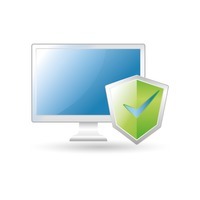
Lots of new questions in the Ask The Pros box this week. This first question, answered by Doug Bender, will help anyone who might have a compromised system. Taking advantage of the talent on our Pitstop forums is an area that many people overlook. Our Help Forum is a big part of the fight to keep your system clear of malware and running in top form. The sooner you take advantage of it the sooner your system will benefit.
Q. Dave Asks: “Hi Pro’s, Here’s my problem. Sometime after my daughter’s last visit from college my computer stopped recognizing me as the “administrator” on my “network.” Since then I have lost my control panel and can’t make any changes to my system. My computer says I need to see the system admin because I don’t have privileges to do this or that. Now I have a bloated system with all kinds of garbage that I can’t get rid of. My computer has gotten just like my daughter…neither of them ever listen to me.
Help.
Desperate dad in Chi-townâ€
A. Doug Answers: Thank you for contacting PC Pitstop Ask the Pros. The first thing to check would be to make sure the computer is ‘clean’. I would suggest you scan the computer with the HiJackThis tool and post a log on our website for assistance from a Trusted HJT Adviser.
You can read about HJT here,
and post your log here.
You may first want to try doing a malware scan using the free versions from malwarebytes or Superantispyware.
Doug’s suggestion is right on target. Virus intruders often need a mufti-faceted fix. Today these pests attack more like a flanking army than a single assassin. Cleaning must come from several fronts and include several weapons. Multiple searches and applications are almost always required to completely remove crippling trojans and hijackers. We have only trained HJT advisers viewing your logs and suggesting changes. They don’t take their cause lightly. Along with Doug’s suggestions I’d add our own free Exterminate detection scan and the Avast Free Trial for detection, prevention, and removal.
Q. Rose asks: How can I speed up my boot time?
A. This is a question I see over and over again. There are probably hundreds of sites offering suggestions on speeding up boot times from within Windows, but one of the very first thing to do takes place in your bios. The bios is where your system receives instructions that allow it to boot, so this is not the place to make mistakes. Mistakenly changing a memory setting can transform your system into a large obtrusive door stop. However, for those who are willing to take the chance, here’s what to do.
HOW TO
1. Enter your systems bios by rebooting your system and continuously tapping the Delete or F2 key.
2. Boot Devices: Navigate to the Boot Settings screen. Once there you can shave a second or two off the boot time by choosing the Hard Drive as the first boot device. This way it will boot directly without checking for a CD, DVD, or floppy disc. I might as well note here that in order for the changes to stay in effect you will need to “Save Changes” before exiting. I normally do this by hitting ESC/F10/YES Save Changes. Just remember you must change it back in order to boot to a Windows repair disk or floppy.
In this same section you will have the option of naming the 2nd, 3rd, and maybe even other boot devices. I take these out. That’s right, I don’t have as second or third option.
3. Quick Boot: Although bios vary from motherboard to motherboard, most will have an option for Quick Boot. During the initialization process your system checks hardware devices and it also checks your system memory. Your random access memory, better known as RAM, takes a while to count. The more RAM, the longer it takes. This along with the other items included in the Power On Self Test can be skipped by choosing the Quick Boot option. Some bios may not have the Quick Boot option so in that case look for a Memory Check setting. If this is what your system has you can skip that as well.
Recently some computer manufacturers are shipping with the Quick Boot option enabled by default. This poses no real danger to your system, but be sure to enable the test if you are experiencing any stability, blue screen, or crashes. The memory check may identify the problem as being due to faulty memory.
That’s it for this newsletter. Look for us agan in April.
SUBMIT A QUESTION HERE
Please note: we will not be able to respond to every question submitted. Selected questions will be answered in the Ask The Pros section of our Monthly Newsletter.




